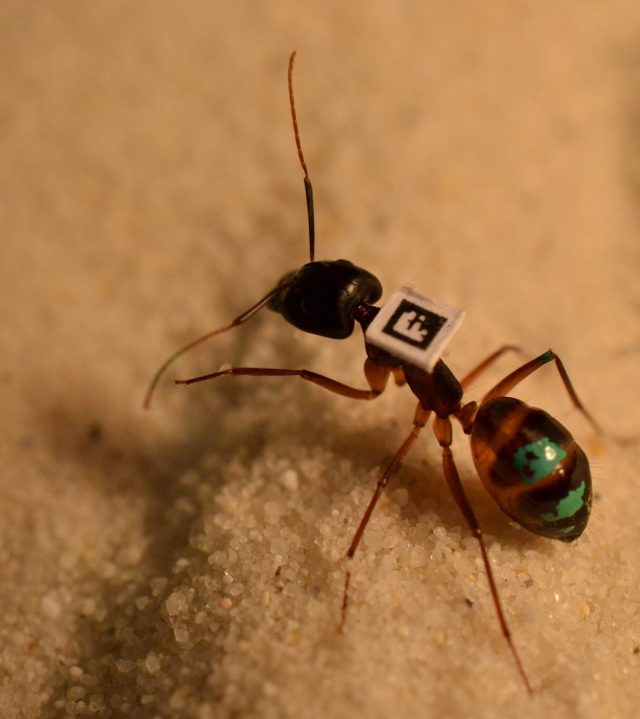
For creatures with very small brains, ants build strikingly complex societies. How a colony of hundreds or thousands of ants maintains order remains poorly understood, but new high tech research methods might be able to shed some light on the complexity of the colony.
A team of Swiss scientists glued barcodes to hundreds of ants living in six laboratory colonies and recorded all of their movements for more than a month. The video analysis recorded the position and orientation of every ant, twice a second. They published the results of the ant tracking in Science this week.
What can you learn from watching 9 million ant-to-ant interactions?
Not surprisingly, the researchers found out that ants divide and conquer. They found three main groups of workers—one tends the young, another forages for food, and a third keeps the nest clean. Other studies have documented this segregation of labor before, but Mersch et al wanted to figure out how the ants know which groups they belong to.
Each colony has a queen ant, the only member who reproduces, but previous research has shown that despite the regal name, she doesn’t lead or organize the colony activity.
These researchers suspected that age might play a role in the division of labor, but it’s not easy to figure out how old an ant is. Instead, the researchers spent 60 weeks in advance of the experiment tagging the ants as they emerged from their pupal state—each week got its own color code.
Analyzing the color codes, they found that younger ants were more likely to work nursing the young, and older ants were more likely to be foragers. In general, they watched ants transition from nursing to cleaning to foraging as they age, but there’s a lot of individual variation in how quickly these transitions took place.
If you’ve ever watched an army of ants invade a picnic, marching in line to haul your crumbs back to the nest, you know that they are capable of highly coordinated action. This coordination comes via a combination of communication using scents deposited in the environment and through touching antennas, which probably provides a combination of chemical and sensory stimuli.
To measure how fast ants could spread information like “food over here” or “threat over there” throughout the community, the researchers measured how many degrees of separation exist between all the ants. They found that for one theoretical ant with important news, it takes about an hour of individual ant-to-ant interactions for almost all of community—about 150 individuals on average—to receive the information.
This intensive ant tracking technique provided researchers with 3 key Ws of communication: who, where, and when. However, science still can’t tell us what the ants are actually saying to each other, or anything about the fifth W: why.
Science, 2013. DOI: 10.1126/science.1234316 (About DOIs).
reader comments
48